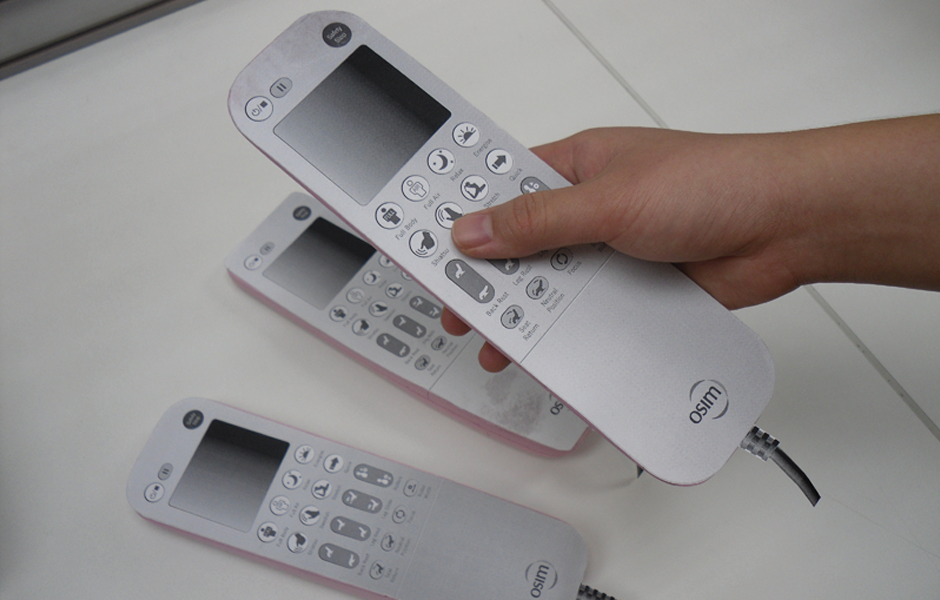
I worked closely with a design consultant to initiate a study of competitor products and an investigation into the entire OSIM products lineup. The evaluation highlighted drastic differences in user flows and inconsistent user experiences and product features - even among products from the same sub-brand - all of which negatively affected OSIM's success in the marketplace. The resulting heuristic report became the baseline for helping to structure a user study to further understand the needs of the company's users and to uncover any unforeseen usability issues.
I planned and organized a comprehensive user study that was conducted in Singapore's Changi International Airport. OSIM set up a Chair Spa Lounge that became the venue for our user study. We offered free massage as an incentive and with the user's consent, we recorded every session. The team then analyzed the results of this user study, identifying usability issues and recognizing user needs as potential feature or design improvements and enhancements. All findings were published as a report for the development, branding, and marketing teams.




